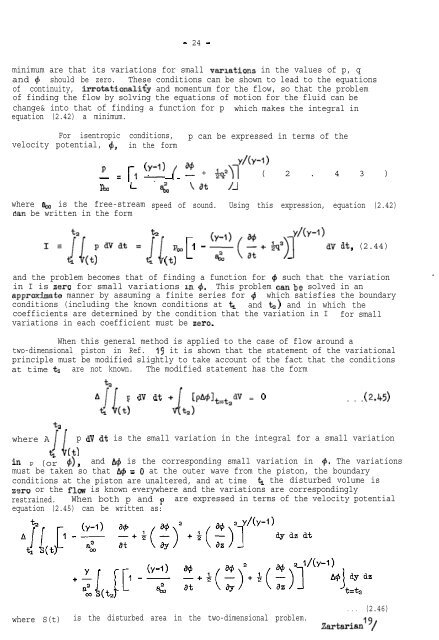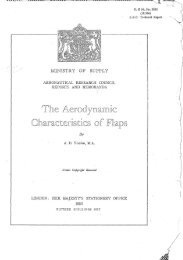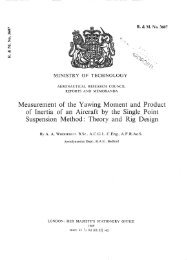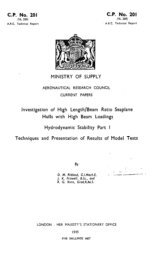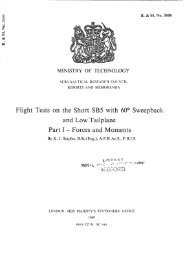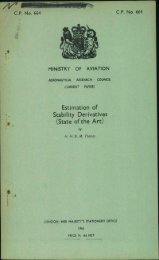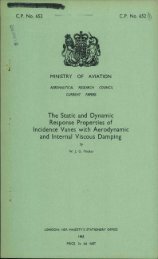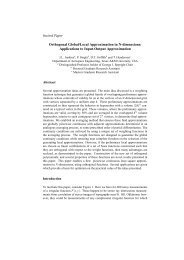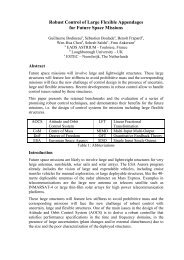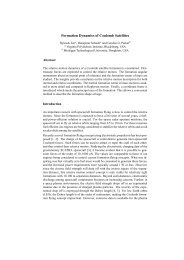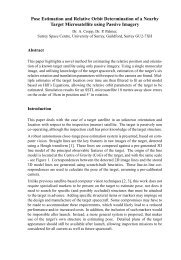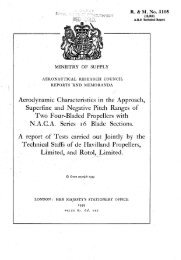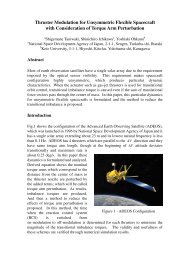A Survey of Unsteady Hypersonic Flow Problems
A Survey of Unsteady Hypersonic Flow Problems
A Survey of Unsteady Hypersonic Flow Problems
You also want an ePaper? Increase the reach of your titles
YUMPU automatically turns print PDFs into web optimized ePapers that Google loves.
- 24 -<br />
minimum are that its variations for small variations in the values <strong>of</strong> p, q<br />
and $ should be zero. These conditions can be shown to lead to the equations<br />
<strong>of</strong> continuity, irrotationality and momentum for the flow, so that the problem<br />
<strong>of</strong> finding the flow by solving the equations <strong>of</strong> motion for the fluid can be<br />
change& into that <strong>of</strong> finding a function for p which makes the integral in<br />
equation (2.42) a minimum.<br />
For isentropic conditions, p can be expressed in terms <strong>of</strong> the<br />
velocity potential, 6, in the form<br />
p = r, (y-l) ( f! + $o(y-')<br />
. . . ( 2 . 4 3 )<br />
Ibo L<br />
where s, is the free-stream<br />
can be written in the form<br />
ta<br />
PC.3 I<br />
t; ‘J(t) ti lb (t) [<br />
& Iat /-I<br />
speed <strong>of</strong> sound. Using this expression, equation (2.42)<br />
-!I$(;+ $$)~y-r)w a, (2.44)<br />
and the problem becomes that <strong>of</strong> finding a function for $ such that the variation<br />
in I is sero for small variations in +. This problem canbe solved in an<br />
approximate manner by assuming a finite series for 4 which satisfies the boundary<br />
conditions (including the known conditions at k and I+) and in which the<br />
coefficients are determined by the condition that the variation in I for small<br />
variations in each coefficient must be sero.<br />
When this general method is applied to the case <strong>of</strong> flow around a<br />
two-dimensional piston in Ref. 19 it is shown that the statement <strong>of</strong> the variational<br />
principle must be modified slightly to take account <strong>of</strong> the fact that the conditions<br />
at time te are not known. The modified statement has the form<br />
A][(; dv at +~t2;pA~lt~t2~~ = 0 . . . (2.45)<br />
+a<br />
where A p dV dt is the small variation in the integral for a small variation<br />
h u(t)<br />
in P (or +), and A+ is the corresponding small variation in +. The variations<br />
must be taken so that A$ = 0 at the outer wave from the piston, the boundary<br />
conditions at the piston are unaltered, and at time b the disturbed volume is<br />
zero or the flm is known everywhere and the variations are correspondingly<br />
restrained. When both p and p are expressed in terms <strong>of</strong> the velocity potential<br />
equation (2.45) can be written as:<br />
where S(t) is the disturbed area in the two-dimensional problem.<br />
. . . (2.46)<br />
Zartari*n19/


